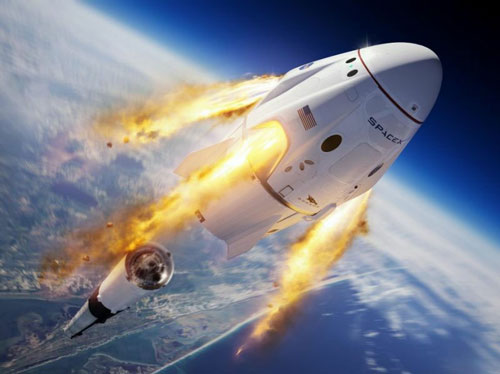Cape Canaveral
SpaceX completed the last big test of its crew capsule before launching astronauts in as little as two months, mimicking an emergency escape shortly after liftoff on Sunday.
No one was aboard for the wild ride in the skies above Cape Canaveral, just two mannequins. A Falcon 9 rocket blasted off as normal, but just over a minute into its supersonic flight, the Dragon crew capsule catapulted off the top 12 miles above the Atlantic.
Powerful thrustres on the capsule propelled it up and out of harm’s way, as the rocket engines deliberately shut down and the booster tumbled out of control in a giant fireball.
The capsule reached an altitude of about 27 miles before parachuting into the ocean just offshore to bring the nine-minute test flight to a close and pave the way for two Nasa astronauts to climb aboard next time.
SpaceX flight controllers at the company’s California headquarters cheered every milestone especially the splashdown. Everything appeared to go well despite the choppy seas and overcast skies.
Recycled from three previous launches, the SpaceX rocket was destroyed as it crashed into the sea in pieces. The company founded and led by Elon Musk normally recovers its boosters, landing them upright on a floating platform or back at the launch site. That’s the main objective of this test, is to show that we can carry the astronauts safely away from the rocket in case anything’s going wrong, said SpaceX’s Benji Reed, director of crew mission management.
“This test is very important to us … a huge practice session,” Reed added. Nasa’s commercial crew programme manager, Kathy Lueders, said the launch abort test was “our last open milestone” before allowing SpaceX to launch Doug Hurley and Robert Behnken to the International Space Station.—AP










